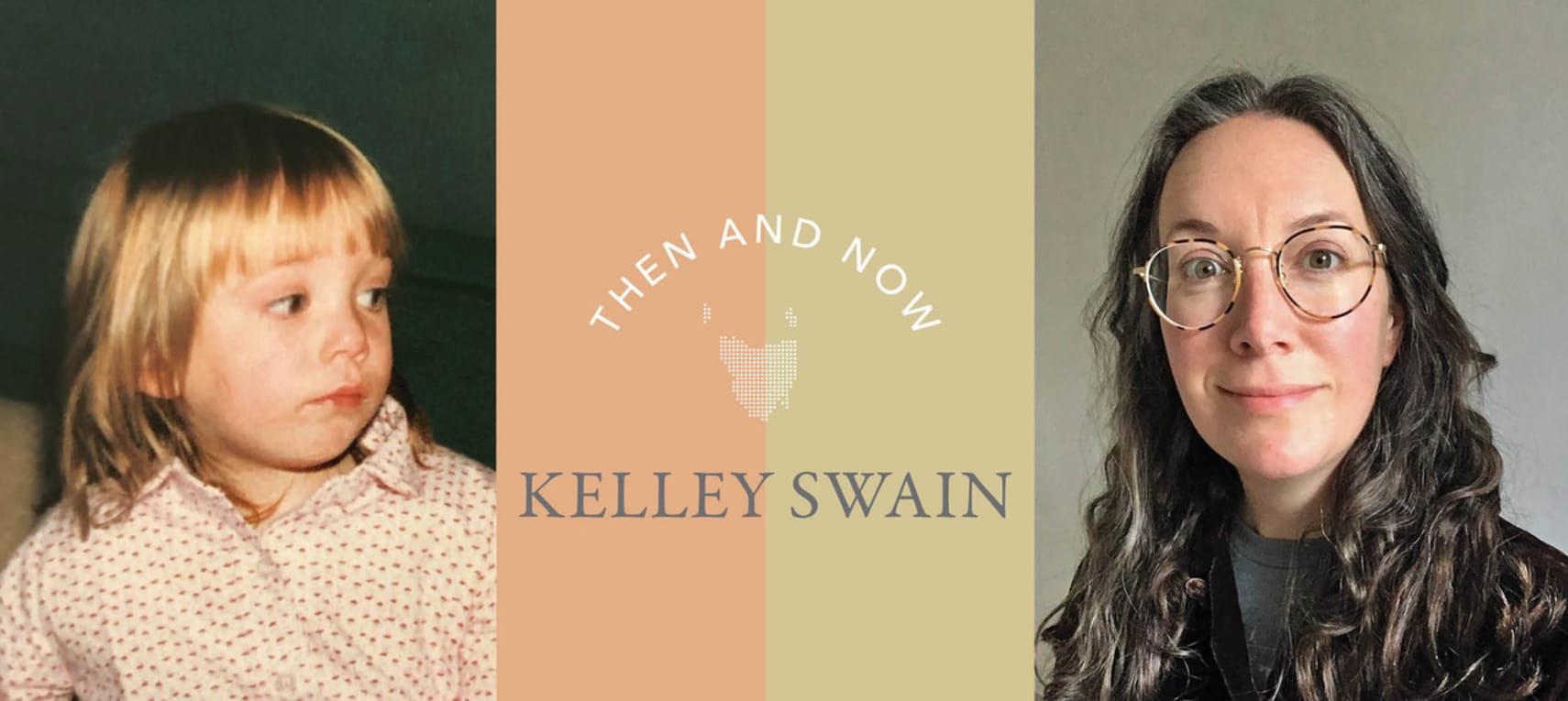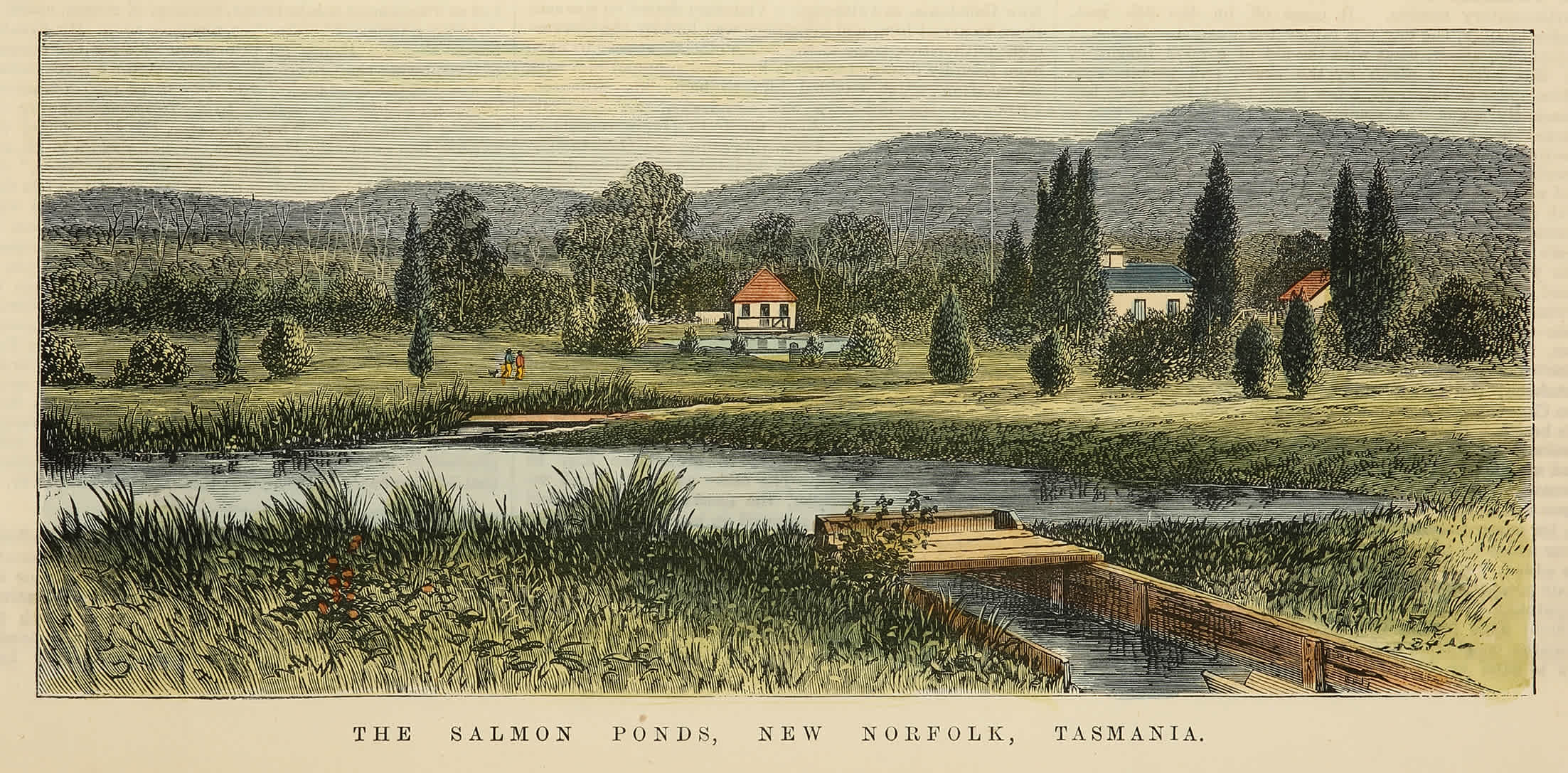A beach, somewhere between laylatiya and putalina, lutruwita (or Randall’s Bay and Huon Valley, Tasmania). A heron overhead. Blue, blue sky. No cloud. Waves, lapping. Sea: dark blue and clear.
I’m recalling all the time we spent at the beach as I was growing up, and seeing now what a luxury it was, and is – to be able to sit on the sand, towel drying slowly beneath you, reading, writing, or just staring out, contemplating the horizon. To be back along the coast is simultaneously a great gift, and utterly familiar. I am nearly as far away from my childhood home in Rhode Island as I can get. Yet sometimes, driving along winding, coastal roads with weather-beaten shores, I experience vertiginous déjà vu, as if I’m back in my childhood home.
The sometimes orange, sometimes yellow sandstone cliffs are, however, ostentatiously Australian, as are the spindly, Dr Suessian eucalypts. The bite of the sun is especially hot, and the winds, occasionally blowing from the southern pole, especially cold. Sometimes, my whole aesthetic sense aches for the green hills and ancient architecture of England, where I lived for 14 years. I feel wild longings for what I have come to define broadly as northern hemisphere seasons: four of them. The seasons here, to this newcomer, feel tepid, but brushed with bursts of colour. Spring is yellow; summer, pink. Tasmania: Australia’s island state. And, like Rhode Island is to America, Tasmania is Australia’s smallest state.
This island is familiar, but different. Yes, there are pine trees (introduced,) reminding me of the native pines of my first home. But after rain, the air is full of a warm, pungent rising: oils from peppermint gums, from eucalypts. It can snow here, yet a flock of cockatoos screeches past, flashes of yellow in their feathers. Their cries sound prehistoric. There is a perplexing evergreen with red needles, and the eucalypts aren’t deciduous.
. . .
I hail from a coastal town called Westerly, and it lies very nearly 40 degrees north, on the east coast of the US. We’ve moved 40 degrees south, an inhabited last stop before Antarctica. Westerly (41.37 degrees north, to be precise,) is part of New England, first settled by the British in 1661, but home to and settled by indigenous tribal nations for the preceding 10,000 years. North-eastern tribes include the Pequots, the Nipmucs, the Niantics, the Narragansets and the Wampanoags of the Algonquian people. Not far away were the Mohegan clan of the Delaware Tribe.
I grew up with my mouth full: full of hot, buttery lobster rolls and creamy clam chowder; full of bubbling, vowel-heavy place-names: Wyassup, where I went to summer camp; Weekapaug, where the oldest continuously operating “flying horse” carousel in the country would enchant us as children; Quonochontaug, Misquamacut, Napatree — beautiful beaches, million-dollar summer houses for rich New Yorkers, woodlands full of auburn-leaved autumn hikes, and the threat of tick-borne Lyme disease.
When we decided to move to Tasmania, the first “pro” I listed was, “You can see whales from your house!”
Two months after arriving, on September 21, 2020, 450 pilot whales beached and 380 died, making it the largest recorded stranding in Tasmania’s history. In September 2022, 200 pilot whales died in another stranding. I have yet to go out to see any whales, but it’s for several happy reasons, namely, becoming pregnant and missing the “whale season”. Whales are out there, to my relief, but the strandings are distressing.
I’ve been dreaming of, writing about, and seeking out whales since I was a child. Being a New Englander, whales are in my blood, for better and worse. There is a family history of whaling from both sides, the Swains and the Perrys. In 1659, nine men bought Nantucket Island from Thomas Mayhew of Wiltshire, England. History suggests that the fair treatment of native peoples during this land acquisition meant a great deal less bloodshed than elsewhere; more recent interpretation suggests that tribal chiefs of the local Wampanoags, well aware of the blood being shed elsewhere, elected to cede power to the colonisers in order to survive.
These white men who bought Nantucket, some with surnames that would become famous for whaling thanks to Melville’s Moby-Dick, included a Macy, a Coffin and a Swain. These men would be part of a whaling empire which would ultimately kill an estimated 32,000 to 40,000 sperm whales. Except in those days, they didn’t count whales: they counted barrels of oil. The Swain in this group was the son of a man born in 1594 in Derbyshire, England, who, upon adulthood, would sail to the Colonies on a ship name Truelove.
Meanwhile, the other side of the family tree were sailing to the colonies on the Mayflower – at least, that’s the story my grandmother loved to tell. She was a Perry, and I heard of Commodore Matthew Perry, who opened Japan to outside trade. I always wondered quite what the word “opened” meant – it meant threatening a major Japanese port with cannon. And I heard of his brother, Oliver Hazard Perry, who won a fight against the British at the Battle of Lake Erie. These stories were told, almost annually, as 15 or more of us sat around the mahogany dining table for Thanksgiving dinner.
Except, Gran wasn’t a Perry – not if you’re counting blood. She, along with another baby girl, were adopted by my great-grandmother, Phoebe Perry, a single woman. It was only Phebe’s wealth, my mom used to tell me, and her training as a nurse in World War I, that allowed her, an unwed lady, to adopt two babies.
After my grandmother died, and my aunt slowly made her way through the documents that had been left unturned for decades, she rustled up Gran’s adoption papers. The surname: Cartier. Who knows if the infant Nancy was left at the orphanage in shame by a wealthy family of French jewellers, or if that name had already dispersed in the ever-growing American diaspora?
The Swains ended up in Connecticut, where my great-great-great grandfather married a woman named Maria Theresa. Except, her name was almost certainly not Maria Theresa, and it saddens me that I will probably never know her birth name, for she was a woman of the Wolf Clan: the Mohegan Tribe of the Delaware Nation.
. . .
Being a freshly-emigrated person trying to understand a new landscape, mourning the mass stranding of pilot whales, learning about the indigenous people of lutruwita/Tasmania and how these people are absolutely still alive and custodians of their culture and landscape, prompted me to find out what I could about my great-great-great grandmother. I learned that for indigenous peoples of the east coast of North America, Moshup the Giant and his family become whales, and have done, so the story goes, for 10,000 years or more.
I still dream of whales, and would prefer to think it’s because of her, my ancestral grandmother, than because of all the blood my other ancestors have shed. Perhaps it’s both. A sort of yin/yang. Worshipping whales, and killing them.
I think of all the ways that history has staked a claim. I think of bloodlines. I think of 40 degrees: Rhode Island, Tasmania.
So, here I am, settling with my husband, working to make a home. We would like to think we are custodians of the house and two acres we have excitedly, if uncomfortably, purchased – this little hill certainly was here long before us, and hopefully will remain, long after.
I gave birth to our baby in Hobart Royal Hospital in December, 2021. Our vibrant, elfin daughter is the embodiment of joy. It sometimes feels like it was an outrageous decision to have had a child, when the world seems to be falling apart with alarming rapidity. And though she is, technically, Tasmanian, I also feel a sense of heartache and displacement. Whose ancestors am I calling to? How do I put down roots and make a home for my daughter when I myself feel unease about being here, perpetuating a colonial way of being? The colonial history grievous wrongdoing is very similar in Rhode Island, 40 degrees north, and Tasmania, 40 degrees South. Is that, in part, why this place feels familiar? What story am I writing for our daughter?
I hope that our child can feel connected by the migrations of whales, rather than saddened by strandings. That she will feel linked to my ancestral home and this one, by the interconnectedness of landscapes that have geologically shifted over millennia, rather than by the same-ness of invasive species. That she will feel rooted in a connection to the land thanks to the knowledge of, and respect for, indigenous custodians, whether it be the Wolf Clan of 40 degrees north, or the palawa of 40 degrees south. If we know where we come from, we know better who we are. And, I hope, we’re better able to care for the land in which we live.
Kelley Swain is a writer and academic specialising in the history of science and medicine. She writes for The Lancet medical journals, and is the author of several books, including The Naked Muse, Ophelia Swam, Double the Stars, Opera di Cera, Darwin’s Microscope, and Atlantic. Swain was born in Rhode Island, and spent 14 years living in the UK before moving with her husband to Tasmania. She currently works at UTAS.








